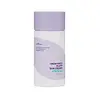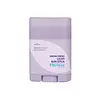What's inside
What's inside
 Key Ingredients
Key Ingredients

 Benefits
Benefits

 Concerns
Concerns

 Ingredients Side-by-side
Ingredients Side-by-side

Water
Skin ConditioningDibutyl Adipate
EmollientEthylhexyl Triazone
UV AbsorberTerephthalylidene Dicamphor Sulfonic Acid
UV AbsorberButylene Glycol
HumectantPropanediol
SolventSilica
AbrasiveMethylpropanediol
SolventNiacinamide
SmoothingTromethamine
BufferingAllium Cepa Bulb Extract
Skin ConditioningSodium Hyaluronate
HumectantSphingomonas Ferment Extract
Skin ConditioningPyrus Malus Fruit Extract
Skin ConditioningCaprylyl Methicone
Skin ConditioningDiethylamino Hydroxybenzoyl Hexyl Benzoate
UV FilterDiisopropyl Sebacate
EmollientLauryl Lactate
EmollientPolysilicone-15
UV FilterPentylene Glycol
Skin ConditioningPolyglyceryl-3 Distearate
Emulsifying1,2-Hexanediol
Skin ConditioningBis-Ethylhexyloxyphenol Methoxyphenyl Triazine
Skin ConditioningC12-15 Alkyl Benzoate
AntimicrobialDimethyl Capramide
Emulsion StabilisingPhenethyl Benzoate
EmollientPalmitic Acid
EmollientStearic Acid
CleansingC13-15 Alkane
SolventGlyceryl Stearate
EmollientHydroxyacetophenone
AntioxidantPolyether-1
Dimethicone/Vinyl Dimethicone Crosspolymer
Skin ConditioningSodium Stearoyl Glutamate
CleansingGlyceryl Stearate Citrate
EmollientAdenosine
Skin ConditioningMicrocrystalline Cellulose
AbsorbentBiosaccharide Gum-1
HumectantPolyglyceryl-10 Myristate
Skin ConditioningSodium Phytate
Cellulose Gum
Emulsion StabilisingEthylhexylglycerin
Skin ConditioningArginine
MaskingSodium Ascorbyl Phosphate
AntioxidantTocopherol
AntioxidantGlyceryl Glucoside
HumectantHydrolyzed Extensin
Skin ConditioningGlycerin
HumectantCarbomer
Emulsion StabilisingWater, Dibutyl Adipate, Ethylhexyl Triazone, Terephthalylidene Dicamphor Sulfonic Acid, Butylene Glycol, Propanediol, Silica, Methylpropanediol, Niacinamide, Tromethamine, Allium Cepa Bulb Extract, Sodium Hyaluronate, Sphingomonas Ferment Extract, Pyrus Malus Fruit Extract, Caprylyl Methicone, Diethylamino Hydroxybenzoyl Hexyl Benzoate, Diisopropyl Sebacate, Lauryl Lactate, Polysilicone-15, Pentylene Glycol, Polyglyceryl-3 Distearate, 1,2-Hexanediol, Bis-Ethylhexyloxyphenol Methoxyphenyl Triazine, C12-15 Alkyl Benzoate, Dimethyl Capramide, Phenethyl Benzoate, Palmitic Acid, Stearic Acid, C13-15 Alkane, Glyceryl Stearate, Hydroxyacetophenone, Polyether-1, Dimethicone/Vinyl Dimethicone Crosspolymer, Sodium Stearoyl Glutamate, Glyceryl Stearate Citrate, Adenosine, Microcrystalline Cellulose, Biosaccharide Gum-1, Polyglyceryl-10 Myristate, Sodium Phytate, Cellulose Gum, Ethylhexylglycerin, Arginine, Sodium Ascorbyl Phosphate, Tocopherol, Glyceryl Glucoside, Hydrolyzed Extensin, Glycerin, Carbomer
Caprylyl Methicone
Skin ConditioningMethyl Methacrylate Crosspolymer
Isopropyl Palmitate
EmollientDibutyl Adipate
EmollientSynthetic Wax
AbrasiveCoco-Caprylate/Caprate
EmollientButyloctyl Salicylate
Skin ConditioningSilica
AbrasiveVinyl Dimethicone/Methicone Silsesquioxane Crosspolymer
Diethylamino Hydroxybenzoyl Hexyl Benzoate
UV FilterBis-Ethylhexyloxyphenol Methoxyphenyl Triazine
Skin ConditioningEthylhexyl Triazone
UV AbsorberMicrocrystalline Wax
Emulsion StabilisingPolysilicone-15
UV FilterEthylhexyl Palmitate
EmollientVinyldimethicone
Camellia Japonica Seed Oil
EmollientAllium Cepa Bulb Extract
Skin ConditioningHouttuynia Cordata Extract
Skin ConditioningCryptomeria Japonica Leaf Extract
HumectantNelumbo Nucifera Leaf Extract
Skin ConditioningSaccharomyces Ferment
Skin ConditioningPolyglyceryl-4 Diisostearate/Polyhydroxystearate/Sebacate
EmulsifyingPolymethyl Methacrylate
Bisabolol
MaskingWater
Skin ConditioningIsododecane
EmollientOctyldodecanol
EmollientAdenosine
Skin ConditioningPolyglyceryl-4 Isostearate
EmulsifyingTriethoxycaprylylsilane
Isopropyl Titanium Triisostearate
EmollientAluminum Hydroxide
Emollient1,2-Hexanediol
Skin ConditioningPhytosterols
Skin ConditioningAcetyl Glucosamine
Skin ConditioningAllantoin
Skin ConditioningNiacinamide
SmoothingButylene Glycol
HumectantZinc PCA
HumectantCI 77007
Cosmetic ColorantCI 77891
Cosmetic ColorantCaprylyl Methicone, Methyl Methacrylate Crosspolymer, Isopropyl Palmitate, Dibutyl Adipate, Synthetic Wax, Coco-Caprylate/Caprate, Butyloctyl Salicylate, Silica, Vinyl Dimethicone/Methicone Silsesquioxane Crosspolymer, Diethylamino Hydroxybenzoyl Hexyl Benzoate, Bis-Ethylhexyloxyphenol Methoxyphenyl Triazine, Ethylhexyl Triazone, Microcrystalline Wax, Polysilicone-15, Ethylhexyl Palmitate, Vinyldimethicone, Camellia Japonica Seed Oil, Allium Cepa Bulb Extract, Houttuynia Cordata Extract, Cryptomeria Japonica Leaf Extract, Nelumbo Nucifera Leaf Extract, Saccharomyces Ferment, Polyglyceryl-4 Diisostearate/Polyhydroxystearate/Sebacate, Polymethyl Methacrylate, Bisabolol, Water, Isododecane, Octyldodecanol, Adenosine, Polyglyceryl-4 Isostearate, Triethoxycaprylylsilane, Isopropyl Titanium Triisostearate, Aluminum Hydroxide, 1,2-Hexanediol, Phytosterols, Acetyl Glucosamine, Allantoin, Niacinamide, Butylene Glycol, Zinc PCA, CI 77007, CI 77891
 Reviews
Reviews

Ingredients Explained
These ingredients are found in both products.
Ingredients higher up in an ingredient list are typically present in a larger amount.
1,2-Hexanediol is a synthetic liquid and another multi-functional powerhouse.
It is a:
- Humectant, drawing moisture into the skin
- Emollient, helping to soften skin
- Solvent, dispersing and stabilizing formulas
- Preservative booster, enhancing the antimicrobial activity of other preservatives
Adenosine is in every living organism. It is one of four components in nucleic acids that helps store our DNA.
Adenosine has many benefits when used. These benefits include hydrating the skin, smoothing skin, and reducing wrinkles. Once applied, adenosine increases collagen production. It also helps with improving firmness and tissue repair.
Studies have found adenosine may also help with wound healing.
In skincare products, Adenosine is usually derived from yeast.
Learn more about AdenosineRed onion extract? This ingredient not only benefits our diet but also offers numerous benefits for the skin.
Like many other plant extracts, red onion is loaded with antioxidants and nutrients. The red color of the onion comes from its high anthocyanin content - and anthocyanin is a potent antioxidant.
Besides being rich in antioxidants, red onions also contain sulfur, sugars, Vitamin C, and biotin.
A study from 2018 found onion extract to be just as effective as healing surgical scars as traditional silicone gel.
Another study from 2008 showed using this ingredient helped reduce surgical scar texture, redness, and overall appearance in 60 patients.
According to a manufacturer, this ingredient can help with the following:
Another manufacturer from Spain claims onion extract can inhibit the release of allergy hormones and prostaglandin, or lipids found near tissue damage and infection spots.
This ingredient is water-soluble.
Learn more about Allium Cepa Bulb ExtractYou might know this ingredient as Tinosorb S or Bemotrizinol. It is a UV filter that covers both UVA and UVB rays.
This ingredient has two peak UV absorption peaks ( 310 and 340 nm) and is able to absorb both UV-A and UV-B rays. This ingredient works by preventing UV rays from reaching and damaging your skin.
On top of that - it is highly photostable and helps prevent the photodegration of other sunscreen ingredients such as avobenzone.
Tinosorb S is allowed in the EU, Australia, and Asia. It is close to being approved by the FDA and we'll hopefully get this ingredient in the U.S. by late 2025.
Fun fact: Tinosorb S is the most effective UV absorber at maximum concentration (measured by SPF) permitted in the EU.
This ingredient is oil-soluble, so your oil-cleansers will take this right off at night.
Learn more about Bis-Ethylhexyloxyphenol Methoxyphenyl TriazineButylene Glycol (or BG) is used within cosmetic products for a few different reasons:
Overall, Butylene Glycol is a safe and well-rounded ingredient that works well with other ingredients.
Though this ingredient works well with most skin types, some people with sensitive skin may experience a reaction such as allergic rashes, closed comedones, or itchiness.
Learn more about Butylene GlycolCaprylyl Methicone is a type of silicone.
It helps soften and soothe the skin by creating a thin film on top. This film helps trap moisture, keeping your skin hydrated.
Dibutyl Adipate is an emollient and solvent. It is created from butyl alcohol and adipic acid.
As a solvent, Dibutyl Adipate helps mix and disperse ingredients evenly.
Dibutyl Adipate is soluble in water and organic solvents. It does not absorb UV rays.
Learn more about Dibutyl AdipateDiethylamino Hydroxybenzoyl Hexyl Benzoate (DHHB) is a chemical UV-A absorber. It is formulated for high UVA protection (320-400 nm).
DHHB is well-liked for:
DHHB has been approved by the EU, Japan, Taiwan, and South America for use up to 10%. Unfortunately, it has not been approved for use in the US or Canada due to slow regulatory processes.
This ingredient is soluble in oils, fats, and lipids.
Learn more about Diethylamino Hydroxybenzoyl Hexyl BenzoateEthylhexyl Triazone is a modern chemical sunscreen that protects from UV-B radiation.
It is the most effective of existing UV-B filters, as it provides the highest level of photo-stable absorption. It protects from the entire UV-B range (280 to 320nm), with it's highest level of protection at 314nm.
Ethylhexyl Triazone is oil soluble, oderless and colorless, which mean it is able to be incorporated into a variety of different formulations.
It is not currently available within the United States due to slow changing FDA regulations. Outside of the US, it is used in formulations at concentrations up to 5%.
Learn more about Ethylhexyl TriazoneNiacinamide is a multitasking form of vitamin B3 that strengthens the skin barrier, reduces pores and dark spots, regulates oil, and improves signs of aging.
And the best part? It's gentle and well-tolerated by most skin types, including sensitive and reactive skin.
You might have heard of "niacin flush", or the reddening of skin that causes itchiness. Niacinamide has not been found to cause this.
In very rare cases, some individuals may not be able to tolerate niacinamide at all or experience an allergic reaction to it.
If you are experiencing flaking, irritation, and dryness with this ingredient, be sure to double check all your products as this ingredient can be found in all categories of skincare.
When incorporating niacinamide into your routine, look out for concentration amounts. Typically, 5% niacinamide provides benefits such as fading dark spots. However, if you have sensitive skin, it is better to begin with a smaller concentration.
When you apply niacinamide to your skin, your body converts it into nicotinamide adenine dinucleotide (NAD). NAD is an essential coenzyme that is already found in your cells as "fuel" and powers countless biological processes.
In your skin, NAD helps repair cell damage, produce new healthy cells, support collagen production, strengthen the skin barrier, and fight environmental stressors (like UV and pollution).
Our natural NAD levels start to decline with age, leading to slower skin repair, visible aging, and a weaker skin barrier. By providing your skin niacinamide, you're recharging your skin's NAD levels. This leads to stronger, healthier, and younger looking skin.
Another name for vitamin B3 is nicotinamide. This vitamin is water-soluble and our bodies don't store it. We obtain Vitamin B3 from either food or skincare. Meat, fish, wheat, yeast, and leafy greens contain vitamin B3.
The type of niacinamide used in skincare is synthetically created.
Learn more about NiacinamidePolysilicone-15 is a chemical UV filter that absorbs UV-B rays.
It is a photostable ingredient used to boost SPF factor and protect products from UV-induced deterioration.
This ingredient is not water-soluble.
Learn more about Polysilicone-15Silica, also known as silicon dioxide, is a naturally occurring mineral. It is used as a fine, spherical, and porous powder in cosmetics.
Though it has exfoliant properties, the function of silica varies depending on the product.
The unique structure of silica enhances the spreadability and adds smoothness, making it a great texture enhancer.
It is also used as an active carrier, emulsifier, and mattifier due to its ability to absorb excess oil.
In some products, tiny microneedles called spicules are made from silica or hydrolyzed sponge. When you rub them in, they lightly polish away dead skin layers and enhance the penetration of active ingredients.
Learn more about SilicaWater. It's the most common cosmetic ingredient of all. You'll usually see it at the top of ingredient lists, meaning that it makes up the largest part of the product.
So why is it so popular? Water most often acts as a solvent - this means that it helps dissolve other ingredients into the formulation.
You'll also recognize water as that liquid we all need to stay alive. If you see this, drink a glass of water. Stay hydrated!
Learn more about Water